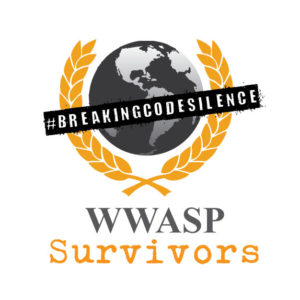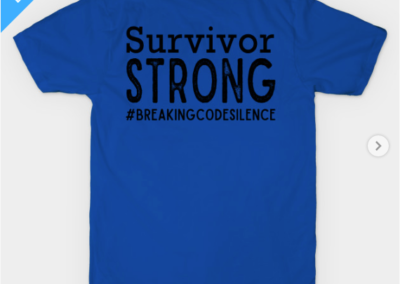In this article, we will examine the testimony of former student and staff of Midwest Academy Stephen Jansing. In his testimony, he details some of what he saw during his time as an employee there. He worked on the boys side of Midwest Academy so he didn’t have experience with the victim that Ben Trane sexually abused but he spend time with other victims.
Below are some important points we would like to highlight in his testimony. If you would like to read his full testimony, a link is at the very bottom of this page.
Every action was regulated and micromanaged. To the point where it was extremely easy for children with conditions like ADHD, depression, anxiety, etc to get in trouble for doing something that any normal person wouldn’t think twice about doing such as biting our nails or looking out a window.
Q. What kind of expectations were at the academy?
A. I mean, you couldn’t have your elbows on the table when you ate, biting your nails, talking to another student, I mean, looking out the window.
Q. You couldn’t look out a window?
A. No. Not as a student there, no. We could but you’d get a consequence for that.
Q. And talking to other students, you weren’t allowed to do that?
A. Not for the most part, no. Certain times you could ask for, you know, the ability to and sometimes the staff would let you, but for the most part, no.
Q. Is it fair to say that almost every action needed permission?
A. Absolutely.
Ben Trane often was both employer and landlord for his employees. The employees had a lot to lose if they ever were to cross Ben.
Q. So the Defendant hired you?
A. Yes.
Q. Where did you live?
A. I lived at the condos in Montrose.
Q. Where is that?
A. North–well, it’s on its way to Burlington. I can’t tell you if it’s north, south, east, or west.
Q. On the road out of town to
Burlington?
A. Yes.
Q. Who owned those condos?
A. Ben Trane.
Q. Was there a lot of other staff that lived in those condos?
A. Yes.
Q. So if you worked at MWA, you were provided housing, or did you rent it, or how did that work?
A. It was rented. I don’t know exactly how each one ended up there renting, but there was several staff there that worked for the school or previously worked for the school.
Q. So the Defendant was your employer as well as your landlord?
A. Absolutely.
Q. What was your job there?
A. As a dorm parent.
The girls and boys couldn’t even look at each other in Midwest Academy.
Q. And what were the rules for the kids in regards to the males and females? If they passed each other, like you said, going to the gym, could they say hi, could they–
A. No. They had to turn their heads to the left. They couldn’t even look at the girls. No communicating, talking. And part of our job as a dorm parent was to make sure that that wasn’t happening as well
These kids would often have problems and need to talk to someone but according to the rules, they weren’t allowed to speak to their dorm parents about their problems or talk at all to their peers. In most cases when they asked for help or someone to just talk to, their family representatives or counselors would not be available to them so they would have to deal with whatever emotional problem they might be having on their own. Not exactly what you would expect from a school that touts itself as a “therapeutic boarding school.” If these children couldn’t get the support they needed when they needed it, is it any surprise that children ended up in OSS or acted out?
Q. What if a kid came to you and said, I’ve got a–I need to talk to somebody; I’m really feeling bad today. What were you supposed to do?
A. We were supposed to radio the shift leader, and then the shift leader would reach out to their family representative. But truthfully, you know, being a student there and understanding what they’re going through to a certain extent, I took it upon myself to try and have a conversation if I could, if the time allowed.
Q. Sure. But you weren’t supposed to?
A. No, of course not.
Q. So if the process was done correctly by the rules, what would happen is that if a child came to you with a problem, you would say, you know, you’re going to need to talk to somebody else. Then you would contact a shift leader; a shift leader would contact the family rep; and, then maybe the family rep would contact a counselor or then somebody would go talk to the kid?
A. Key word “maybe,” yeah. Because a lot of times kids would ask to speak to a family representative or somebody, and it wouldn’t happen, you know. They weren’t at the facility; they had other things that they were doing; and, you know, so it was rare that a family representative would come down and talk to the kid.
Q. And the kids weren’t allowed to talk to each other; correct?
A. No. You could assign an upper level that was working a family with you to talk to a lower level, you know, sometimes, like out in the hallway or in the classroom, but that was, once again, you know, rare and really frowned upon honestly.
Children were encouraged to police other students and despite not being trained professionals, upper level students were allowed to help in restraining other students – something which is very dangerous to do if you’re not professionally trained.
Q. Talk about that little, too. Did the students police each other?
A. Absolutely.
Q. Okay. How did that work?
A. An upper level would say, hey, Mr. Stephan, I have somebody that I saw talking to another lower level. It’s called a referral. And then it would be up to the staff to decide to write a consequence for that. In fact, it’s very much–if you’re watching, like, the Stanford Prison Experiment, it’s very much similar to that.
Q. Were upper level students, if they earned that privilege, were they allowed to help restrain other students?
A. Yeah, absolutely.
Q. Were they taught how to do that?
A. No.
Q. Upper level students could also be rovers; is that right?
A. Yes, for OSS.
Q. What’s a rover?
A. They basically work with the staff. It was usually two upper levels and then a staff that were in OSS, and then they would assist with taking the students for bathroom breaks across the hallway and then just, you know, hanging out pretty much, you know, yeah.
Q. So these upper level students were helping the one staff member monitor for the OSS rooms?
A. Yes.
Some staff members would hand out consequences to children to get them to “mentally break.” They would stack consequences for anything from turning a corner in an “incorrect way” or tapping their pencil.
Q. Now, as a dorm parent, did you haveauthority to place a child in OSS?
A. No. But I mean there were dorm parents that–I mean, they would just hammer them with consequences and get them to–get the student to mentally break, which would cause them to go to OSS. So technically, no, you couldn’t say, you’re going to go to OSS, but I’ve seen dorm parents just write out consequence after consequence after consequence. For example, at school where it would take away from their education where they’re writing, you know, thirty consequences, you know, just for random things. And then they would have a mental break and then they’d go to OSS.
Q. Well, give us an example of, you know, what a kid can do in an hour to get consequences?
A. I mean, anything under the sun. I mean, biting your nails, talking, cussing, tapping their pencil, being disruptive to the school. I mean, there was a lot of things.
Q. Was there something, too, about when they’re walking they had to walk a certain way and turn corners a certain way?
A. Yeah. It was called structure.
Q. What does that mean?
A. It’s basically walking in a straight line, you know, head straight, not looking around. And part of that, too, was if you looked out of line you got a consequence. You know, if you didn’t walk straight in a line, you got a consequence
Q. How were you supposed to turn a corner?
A. It’s called 90s. It was basically, you know, you would–if I could get up and show you.
(The witness stood up in front of the witness stand.)
A. So it’s basically like turning like this (indicating) and then turning like this (indicating), similar to military structure.
(The witness resumed the witness stand.)
Q. And if you didn’t do that?
A. You got a consequence.
Q. You had talked about sometimes kids will get consequence after consequence after consequence, and they would break. What did you mean by that?
A. You know, let’s say a Level 1 that’s struggled for a few months and couldn’t get to Level 2 for multiple consequences. Let’s say he’s, you know– if he finishes the day without consequences, you know, then he’d be a Level 2 the next day, which would include more food from Level 1 to Level 2. So a staff would give him a consequence, let’s say, or a few and he would just say, screw it, he’d have a break, definitely, mental break.
OSS was a small box of a room and while some kids went in there for being out of control, many would just go in for having a bad day or being handed multiple consequences by staff members for minor things.
Q. All right. I’d like to go back to the OSS rooms. OSS is Out-of-School Suspension; correct?
A. Yes.
Q. If I am to walk into the door of the boys’ OSS room, what am I looking at?
A. To the left you would have the monitor of the cameras in OSS. To the right you would have three rooms, three or four rooms. And then as you walk down the corridor, you have two additional rooms.
Q. You say that there’s a monitor. Does every room have a camera in it?
A. Yes.
Q. And then does staff sit and watch that?
A. Yes.
Q. How big are the rooms? Do you know?
A. I don’t. I don’t know the dimensions, but they’re pretty small.
Q. What type of word would you use to describe them?
A. It would be like–in prison, for example, if you’ve ever watched Lock Up or any show on there, it’s like the hole, you know. It has wood around it. It has a concrete floor on the bottom, you know, and it had a light that was constantly on the entire day and night.
Q. What were the doors like on the OSS rooms?
A. They had a window, a small window, that staff or upper levels could look in to see what the student was doing.
Q. When you say “small window,” is it one of those windows that’s at maybe head height that you can peek through?
A. Uh-huh (in the affirmative).
Q. Is that a yes?
A. Yes.
Q. What about handles on the doors?
A. On the outside they had a handle, on the inside, no.
Q. So once the door was shut, if somebody was inside, is there any way for them to get out?
A. No.
Q. Did you ever monitor the OSS rooms?
A. I did.
Q. Was that sometimes part of the job, besides being a dorm parent?A. Yes. So in the morning when we arrived to work, the shift leader would decide whether you’re with a family or you’re working OSS.
Q. First of all, how does a kid get into OSS?
A. Getting a lot of consequences in a day, like having that mental break. The family representative can say, well, he has 1,000 points demerits, so we’re just going to send him to OSS. Assaulting staff, assaulting students, trying to run, “run” meaning escape, you know, cussing out staff constantly. So that’s the majority of it.
Q. Now, when you say getting too many consequences, I think sometimes–I know when I first heard about some of this, I pictured the kids going to OSS because they’re screaming, hurting people, whatever, and have to put in there so they don’t harm themselves or others. That happened sometimes?
A. Yeah, absolutely.
Q. But were there times where a kid wasn’t really in that state, but they still had to go into OSS?
A. Absolutely, yep. They would just have a lot of consequences, you know. And the family representative would say, hey look, you know, if you get 3,000 demerits or whatever, we’re sending you to OSS. And some kids just–I mean, I was one of those dorm parents that consequences wasn’t the ideal way to correctively–to correct the action at all times. You know, some students just need to be talked to. Some staff would just hand out consequences all the time. And so that’s how kids would just end up in there. You know, you’d have 60, 70, 80 consequences for one student in one day, and one result is to go to OSS.
Q. And like you said, sometimes was it normal for you to see that sometimes when a kid was having a bad day and had that coming at them all day that sometimes they would just lose it?
A. Yes, absolutely.
The rules for OSS were pretty horrible. The child would have to sit still in one of two positions for 24-48 hours in order to get out. If they needed water, needed to change positions because their legs had fallen asleep, had an itch to scratch or needed to use the restroom, they would need to raise their hands and wait for someone to notice them on camera.
Q. All right. What were the rules for OSS? If I was placed in OSS, what are my expectations?
A. Your expectations were to basically sit in structure for a certain amount of time, whether that was twenty-four hours, forty-eight hours, whatever it was. And after that, typically you would write an essay assigned by the shift leader or the family representative, 1,000, 2,000, 3,000 word essay, et cetera, on a certain subject. And once you get your structure time, then you would go on to the essay and you’d work on the essay. And then once the essay was completed, the family representative would come in with the shift leader, or the shift leader would come in and say, okay, you know, and take them back to the family.
Q. What do I have to do to sit in structure? What does that mean?
A. Usually it was like Indian-style, or just like laying like this (indicating) with your back against the wall.
Q. And just for the record, you put your legs straight out in front of you?
A. I did. I put my legs straight out in front of me and put both my palms on my knees, and my back against the wall, like a 90-degree angle.
Q. And how long am I supposed to sit for that?
A. It was usually up to the shift leader, but I’ve seen some kids that were assigned seventy-two hours in structure, forty-eight hours, twenty-four hours.
Q. If I’ve been sitting in there for an hour and I– Can my back be against the wall?
A. Yes.
Q. So I’ve had my back against the wall, my legs are out straight, my hands are on top of my legs. And I have an itch, and I itch the top of my head like this (indicating), what happens?
A. The staff is supposed to document that as breaking structure and then, you know, you would basically–the shift leader would occasionally call down and ask how the kids are doing, and then he was supposed to get the report, you know, that so-and-so itched four or five times without asking for the ability to. Usually the students would raise their hand, and then the staff would call on them, and then they could say, can I please, you know, take a drink of water, can I please itch, use the bathroom, et cetera.
Q. How often would I be allowed to use the bathroom?
A. Some kids would choose to ask many times, you know, just to get out of the rooms, not really use the bathroom. Sometimes they were told no, you’re going to have to wait. But for the most part, I mean–everyone’s different, you know, but yeah.
Q. What if my–again, I’m sitting there and my legs are straight out, what if my legs fall asleep and I want to move? Can I move to a different position?
A. You could. And you would also have to ask the staff for that.
Q. And how do I do that? I raise my hand?
A. Raise your hand. And through the cameras the staff would see that you raised your hand and say, you know, what do you need, or how can I help you, and then you would ask to move positions, et cetera.
Q. Was there only certain positions you could move to?
A. Yes.
Q. What were those?
A. The ones I recall, it was Indianstyle with legs crossed, and then it was the back against the wall with your hands on top of your legs. Those were the main two that I know of.
Q. If I go into OSS at 8 o’clock in the morning, is that what I’m doing all day long?
A. Yes.
Q. Do I get to do school work?
A. No.
Having a mattress was a privilege in OSS. If the staff chose, they could deny them the ability to sleep on a mattress that night. According to Jansing, the average stay in OSS would range from 3-4 days but some children would stay in there for weeks on end. For the children who were having a difficult time or could not get out of OSS, they could not “wait it out.” They simply stayed in OSS until they complied. For the children with chemical imbalances, anxiety, depression, etc, one could imagine this would have been hell for them.
Q. What time do the kids usually go to bed in OSS?
A. Shutdown started around 8:00, 8:15. The rover–the upper level rover staff would take them to the bathroom to brush their teeth, use the bathroom, and then by 8:45 they would be in their rooms and go to sleep.
Q. Were there mattresses?
A. Yes.
Q. Did kids always get a mattress?
A. No.
Q. Was a mattress a privilege?
A. Yes, it was.
Q. How did you lose your mattress privilege?
A. Not sitting in structure, acting up, talking to the upper level staff, talking to the staff in general, walking around, just not wanting to sit in structure.
Q. So if I’m in there and I made the decision that day that, you know, I’m not doing this today, but I didn’t yell or I didn’t scream, but I just walked around my room, maybe sang to myself, whatever it may be, does that mean that at nighttime I might not get my mattress?
A. Definitely. It was up to the shift leader to decide that.
Q. What happened if I decided to do that for three days straight? Am I getting out?
A. No.
Q. When do I get out?
A. When you sit in structure. It would be rare that if you did that for a certain amount of time, a week, two weeks, whatever it was, then the shift leader would decide, okay, I’m going to try and take them out of OSS, regardless of what they did in OSS, to try and bring them back to the family. And usually that was unsuccessful. They would act up again, and then they would be back to OSS again.
Q. So I couldn’t wait it out?
A. No.
Q. Then you said–was there a time where sometimes kids could get a chair?
A. Not usually, no. I think maybe once or twice that I was in there they had a chair.
Q. And then if I was good and did my structure, I would have to write an essay?
A. Yes.
Q. And if a child wrote a 1,000-page (sic) essay, would it always just get automatically approved, or would sometimes they have to make revisions and make it better?
A. Yeah. A lot of kids would just write big versus, you know– I think we’ve all done it in our essays growing up, or not on the topic. So the shift leader was expected to review it and let the family representative know, and then they would just decide whether to let him out or not. But sometimes they would go, no, you have to write an additional 500 words because you only have 500 words here, not 1,000.
Q. What was the average stay there?
A. It ranged from–usually, I would say, on average it was probably about three or four days. When I was working OSS and just working there overall as a staff, a few students were there for weeks on end.
Children in OSS had a special diet which was extremely restricted. For example, mentalhelp.net recommends that adolescents receive 1600-2400 calories a day depending on their age and gender. While in OSS, the children were given a breakfast egg dish of some sort and a small carton of milk. Eggs are approximately 147 calories for 2 eggs and a small carton of milk is about 122 calories. For the rest of the meals, they were fed peanut butter and jelly sandwiches with a side of pickles. The calorie count for peanut butter and jelly sandwiches are about 376 calories and pickles are considered almost a 0 calorie food. So if Midwest Academy was feeding the boys in OSS approximately 2 eggs in the morning, a small carton of milk, and 2 peanut butter and jelly sandwiches throughout the day, that would be approximately 1050 calories a day which is dramatically lower than the recommended calorie count.
Q. What were they fed?
A. In the morning it was usually like a breakfast item, like a piece of an egg or some sort of egg-type thing, a little carton of milk. And then lunch and dinner it was mostly OSS meals. It was the special meals where it was just like a peanut butter and jelly sandwich with a side of pickles, for example, and a glass of water, you know.
Q. Did the kids ever tell you they were hungry?
A. Of course.
Music and self-help tapes were blasted on the overhead speaker in OSS during the entire day and the children could never have it turned off. Similar to stories we hear about CIA torture methods.
Q. Were there also some speakers in the rooms?
A. Yes.
Q. All right. What were those speakers for?
A. They were used for motivational tapes. So basically where the staff sat, they had the ability to connect to each of the speakers to play motivational tapes, Deepak Chopra, Tony Robbins, you know, basically that was, you know–stories or whatever you want to call it that was being played through the speakers throughout the day for the most part.
Q. If that was bothering a child, could they ask to have that turned off?
A. Yes, they could ask.
Q. Did that happen?
A. No.
When children’s behavior worsened or they couldn’t handle OSS, it wasn’t uncommon for family representatives and shift leaders to pay less attention to them and extend their time indefinitely. Essentially, instead of trying to help the child through whatever difficultly that was making their time in OSS escalate, they would be ignored. Remember: parents often spent thousands of dollars on this school because they thought their children would be receiving the therapy and help they needed. Instead, it appears that often children were ignored when they needed help the most.
Q. Could your time in OSS increase? You talked about sometimes maybe it would be for twenty-four hours or forty-eight. Could it increase if you were getting into a lot of trouble and being in there a lot?
A. Yes, absolutely. If they were constantly in OSS, in and out, in and out, usually the family representatives and the shift leaders would pay less attention to you and would focus on–and just say, you know what, we’ll see how it goes, and usually it would just constantly increase. You know, the student wouldn’t sit in structure, you know, the motivational tapes were playing through the speakers in their rooms, and the reps would rarely visit them.
Q. Is it fair to say during your time there that in that environment that the more difficulty a kid had, the more they got clamped down on?
A. Absolutely, yep.
Q. Did you see some children go in there and their behaviors worsen?
A. Yes. Q. And I say “in there,” I mean in the OSS rooms?
A. Yes.
Some of the staff would hand out consequences to one of the victims to attempt to get him to mentally break. Once he did, he would be in OSS and hurting himself due to the staff’s blatant abuse of power and antagonism.
Q. Did you know a Bxxxxxx?
A. I did.
Q. Did you see Bxxxxxx in the OSS rooms?
A. Often.
Q. How old was Bxxxxxx?
A. Twelve or thirteen.
Q. What types of things did you see happen with Bxxxxxx in the OSS rooms?
A. Constantly talking, screaming, singing, he urinated on the floor, yeah, it was bad. I’m just replaying all this in my head, yes. Fecal matter smeared on the walls, picking at scabs, blood.
Q. Did he want out?
A. Absolutely.
Q. Do you know at times how Bxxxxxx ended up in OSS?
A. Like I described before, constantly getting consequences. And it wasn’t anything–he necessarily wasn’t cussing staff, he was just talking, you know, maybe it was a little ADHD, couldn’t focus on his school work. Some staff, like I said, loved just to give out consequences, hand them out, you know, and then that became the mental break for Bxxxxxx, and then back to OSS.
Q. And Bxxxxxx could get aggressive?
A. Yeah. I mean, not with me at least. I mean, I wasn’t one of those staff that just constantly hammered students with consequences.
Jansing also knew the other victim. He felt for that kid since he seemed like he had ADHD and that staff would hammer him with consequences to get him to mentally break. Both victims were 12 years old. He also witnessed their dramatic drop in weight.
Q. What about Dxxx? Did you see him in OSS a lot?
A. Often.
Q. How did he usually end up in OSS?
A. Same thing. Cussing, talking, you know, talking to other students, getting up out of his chair in school. He just couldn’t really focus, you know. I mean, when I was a student there I was–you know, I had ADHD, and he reminded me a lot of myself. He couldn’t focus for the life of him, you know. But that was mainly it. So once again, staff would hammer him with consequences; he would have a mental break; he’d go back to OSS.
Q. How did he do when he was in OSS?
A. The same thing as Bxxxxxx. You know, just talking a lot, cussing, just not wanting to sit in structure, obviously.
Q. Did you see times in OSS with Bxxxxxx or Dxxx or any other kids where, you know, sometimes they may go in and be in a fairly stable state, but after being in there for a while the behavior got worse?
A. Absolutely, yeah. I mean, they would change. They lost a lot of weight in there. You would have kids like Dxxx where when he first got to school he was a normal-sized kid, 12 or 13 years old, and he lost a lot of weight. Bxxxxxx, too. I mean, the list goes on.
Q. And Bxxxxxx and Dxxx weren’t the only 12 and 13 year olds that you saw in OSS; correct?
A. Correct
Jansing had serious reservations about the OSS rooms. He felt that it was similar to CIA torture. He also didn’t feel that some kids, such as one of the victims, belonged in Midwest Academy and needed better care. He was scared to come forward originally since Ben Trane was both his landlord, owned his car, and was his employer. He felt that other staff had the same issues with reporting what was happening at the school to authorities for the same reasons as he did.
Q. Did you have concerns about the rooms?
A. Yes, absolutely. Just the factn that the speakers were being played. I mean, imagine constant noise in the background like it was a torture cell for the CIA or something like that. I mean, you see movies where they do that, you know, play loud music constantly. This was a similar thing. It was not okay.
Q. But you worked there?
A. I did. And I went back to that school because I was a student there at one point, and I cared about the kids and I enjoyed working with the kids. But seeing the stuff that I did–or saw, I should say, it wasn’t–it definitely got to me. It wasn’t in the moment I saw it. My best friend worked at the school as well. I mean, we were roommates. We would have talks at night about, you know, Bxxxxxx shouldn’t be at the school.
Q. (By Ms. Timmins) You would have discussions with your friends about concerns at the school?
A. Absolutely.
Q. Do you carry some guilt about working there?
A. Yeah, I do. It definitely took a while to process that. If I knew what I know now versus then, I would have reported it to DHS a long time ago. But back then reporting anything to DHS and not informing anyone else at the school would ultimately result, in my opinion, 100 percent, in termination of employment. And I had a company car. I lived at the condos where Ben owned it. So my whole existence pretty much would be erased.
Q. So you as staff, if you had a concern, if you thought something should go to the outside world, who were you supposed to tell?
A. The shift leader, you know. And once again, it was their discretion on what they wanted to do. But if a shift leader went to DHS, it would also impose on his job as well, because if DHS came in, like they did, and shut it down, he wouldn’t have a job. So there was a lot of pressures, you know, for each individual to go DHS, including reps, shift leaders, et cetera.
The OSS rooms usually had a few kids in them at a time. One girl had to be put in the boy’s OSS room when they didn’t have enough staff at one point. This girl had a lot of problems in OSS and ended up cutting herself and painting a mural with the blood on the wall. According to Jansing, he could tell Midwest Academy wasn’t the right place for one of the victims on his first day when he watched Ben Trane explain the rules to him. Ben still ended up keeping the student and subjecting him to over 100+ days of OSS instead of having him assessed by a third party professional.
Q. How full were the OSS rooms usually?
A. Two or three on average on the boys’ side.
Q. Two or three kids?
A. Two or three kids, yes, in each room. And usually it was like Dxxx, Bxxxxxx, Dxxxxx, Hxxxxx when she was brought over to the boys’ side. It was the same individuals mostly.
Q. Why was Hxxxxx brought over to the boys’ side?
A. We wouldn’t have the staff to have both boys’ and girls’ OSS rooms open, so a lot of times the girl would be over in the boys’ side in one of the rooms, and then they would have girl rovers, upper level girls staff that would watch, you know, and assist with a girl staff member as well.
Q. How old was Hxxxxx?
A. Twelve, if that.
Q. She was in the OSS room a lot?
A. Yes.
Q. What were her behaviors like?
A. The one particular time I remember which stood out the most was when actually Ben walked in–and I think she was sent to a psych hospital. She had cut herself. I don’t know how she had the ability to do it, her nails or whatever, and she drew a mural of blood on the wall. And I actually took a picture on my phone, on my old phone at least, and at the time I showed my girlfriend who I was dating out here, and she was, like, this is not okay. And that’s when Ben came over with the shift leader and the rep, and then after that I didn’t see her. But she was constantly–you know, fecal matter, urinating, you know, talking, not sitting in structure.
Q. Now, you said Ben came in that day that Hxxxxx smeared blood on the walls?
A. Yes.
Q. Would the Defendant come into the OSS rooms?
A. Yeah, absolutely. He would try to talk to them, you know, and basically say, do what you got to do to get out. You know, there was no– Be accountable.
Q. Follow the rules?
A. Follow the rules, yep.
Q. All right. So the Defendant came to the OSS rooms?
A. Yes.
Q. Once a year? Once a month?
A. When I went to OSS, I think I maybe saw him like two or three times maybe dealing with, you know, Hxxxxx or somebody else, Dxxxxx, Bxxxxxx.
Q. Did you ever see the Defendant talking to Bxxxxxx?
A. Yes. When he first came to the facility, I was actually the staff member that was with Ben on the couches when Bxxxxxx first came in and, you know, Ben was explaining things to Bxxxxxx. And right then I knew, he was not supposed to be here.
Q. Why is that?
A. You could just tell. Yeah, there was a– I’m not a doctor. I don’t know these things. But there was a mental issue there.
Jansing rarely observed Ben’s interactions with females since he didn’t work on that side of the facility. He did get the sense that the treatment of girls was different from how the boys were treated and more “touchy-feely.”
Q. Did you ever observe the Defendant’s interactions with the female students?
A. No. It was rare.
Q. At the school itself, were the boys treated differently than the girls?
A. In my opinion, yes.
Q. Why?
A. I couldn’t tell you.
Q. What do you mean?
A. Well, I mean, you just noticed that they were more nice to the girls, maybe a softer spot, more touchy-feely. One of the family representatives, Dan Manuel (phonetic), he was a jerk–I’ll be honest with you–to staff and to boys. But as soon as he went to the girls’ side, he was a different person
Jansing was not given any special training or education at Midwest Academy. He didn’t receive any mandatory child abuse training. From what we have heard from other staff, a lack of special training was the norm at Midwest Academy. I doubt this is how it was presented to parents that were sending their children there.
Q. Did you have any specific education or training to work at Midwest Academy with these kids?
A. No. Just the desire to help them and give back to them what I could.
Q. Did you receive any mandatory child abuse training when you were there?
A. No.
Q. And you said that if something was concerning, you knew you were to go to
your upper level staff?
A. Shift leader.
Stephen Jansing Full Testimony











